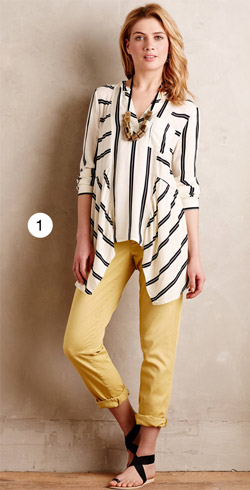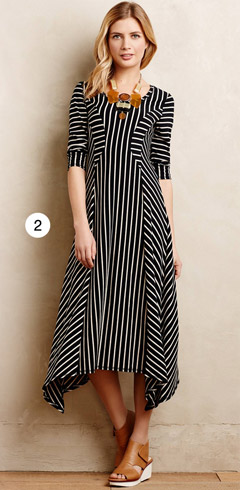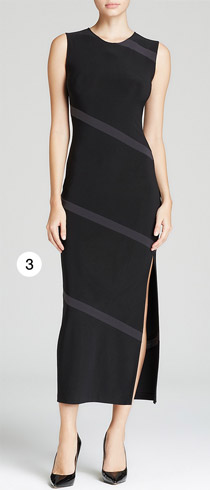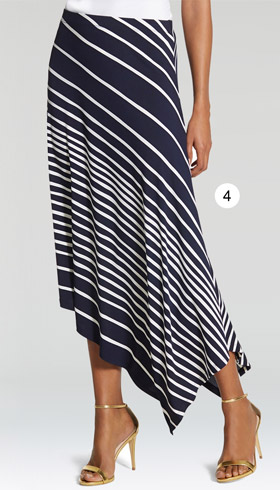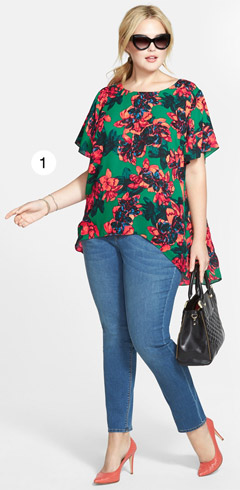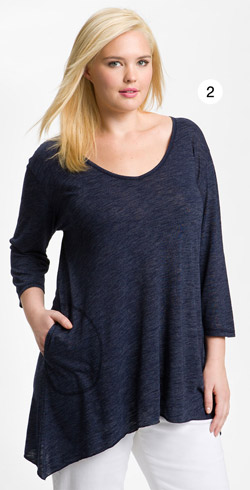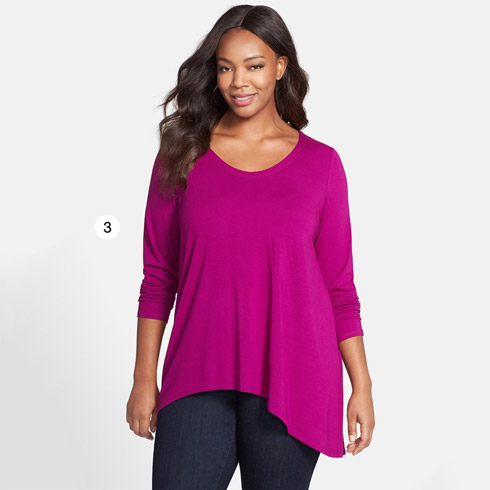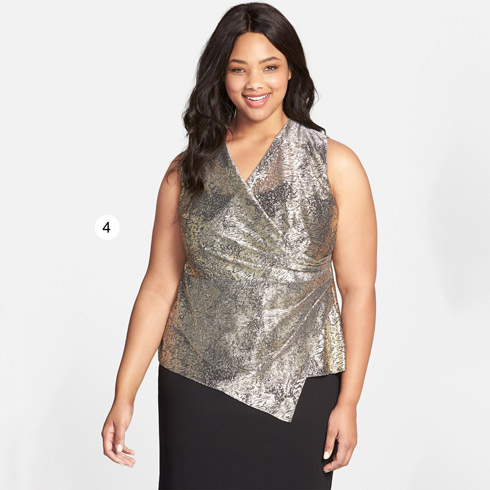Diagonal lines on a garment create a visually interesting and flattering effect on the body. They have a magical way of either straightening curves OR creating curves, which depending on your needs can balance out proportions. They are typically created by diagonal stripes or asymmetrical hemlines, and some garments incorporate both.
Diagonal Stripes
The diagonal stripes in these dresses, tunics and skirt play the best tricks on your eyes. They temper the volume of the white tunic by drawing the eye back to the centre of the outfit, thereby emphasizing the vertical (1). The diagonal lines on the sleeved midi dress draw the eye back to the waistline, thereby accentuating a defined waist (2). The wide set stripes break up the expanse of solid fabric in the black sheath making the model look curvier than she is (3). The diagonal lines on the handkerchief hem skirt give it some structure by breaking up the expanse of the solid colour (4). They also add a bit of shape to the wide and flowing volume on the lower leg.
Asymmetrical Hemlines
Asymmetrical hemlines are your friend because they create diagonal lines without any pattern on the garment. The asymmetrical hemlines in the first three tops create a fab sense of structure because the diagonal lines flatten the curve on the thigh and showcases more of the leg line from the hips up. Conversely, if you’re narrow on the hip, the diagonal lines of the hems would add some curve and volume. A straight hem on those long tops would look top heavy and would have shortened the leg line.
This final top is an interesting use of different diagonal lines working together. The asymmetrical hemline creates a little more structure on the hip. The side ruching of the wrap front creates diagonal lines in the form of pleats that draw the eye towards the waistline, making it look narrower and more defined.
